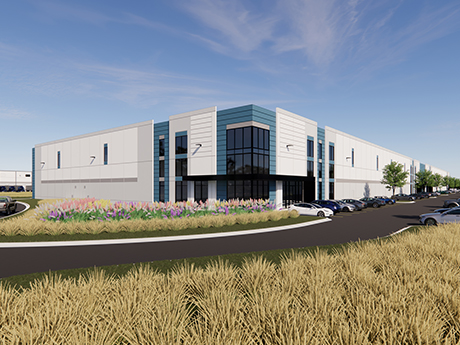By Derek Jacobs of Avison Young
Through the financial uncertainty and confusion of the past four years, Raleigh-Durham has stood out as an exemplary industrial market that has strengthened in economic diversity and stability despite greater national and global market trends and challenges.
The outlook for Raleigh-Durham is very positive thanks to local and state governments that support business, an excellent central East Coast location and a market environment where industrial demand heavily outweighs supply. Triple-net rents in Raleigh-Durham grew by nearly 39 percent since first-quarter 2020, while total vacancy has remained below 4 percent.

The most affordable Class C product has an exceptionally low vacancy rate of 2.7 percent due to lower rent costs outweighing the opportunity costs of moving into a nicer, newer building that will be more expensive in most cases.
The newest and most costly Class A industrial product in Raleigh-Durham has also shown strong demand, with a vacancy rate (5.7 percent) lower than the vacancy rate for all industrial product classes combined across the country (6.1 percent).
Industrial occupiers and residents in Raleigh-Durham work, do business in various industries and provide services that supply further market growth. Around half of the industrial property in Raleigh-Durham is dedicated to the general warehouse, which is popular among many kinds of product and service providers. Some of the market’s largest occupiers using industrial space are Amazon, Medline Industries, BioMerieux, North American Aerodynamics, Wolfspeed and Dell.
Construction
High demand has resulted in a construction boom since the COVID-19 pandemic. Around 20 percent of industrial inventory in Raleigh-Durham was built since 2019, which is a more significant percentage in this category than many other nearby similar markets.
In 2023, the Raleigh-Durham market saw nearly 4 million square feet of industrial space delivered, the highest amount of space to come on line since 2020 (4.4 million square feet), which is radically higher than the 2019 total of 1.4 million square feet delivered.
Going into 2024, the market stands at just over 81 million square feet of total industrial inventory with 3.6 million square feet of industrial space under development, representing a 4 percent share of total inventory.
Of the industrial inventory built since 2019, nearly 40 percent comprises buildings larger than 500,000 square feet as demand for big-box inventory space has increased dramatically in the market since the pandemic.
Availability, rental rates
Available industrial space is less common in Raleigh-Durham than in some other nearby industrial markets — currently 7.8 percent of industrial space in Raleigh-Durham is available.
Since so much of the market’s industrial inventory is new and comprises large-block inventory, vacancy rates will change dramatically with only a few new tenants in the market.
Triple-net rental rates in Raleigh-Durham have risen in recent years, much like other nearby markets. This rise in rental rates has been driven by the high market demand and a sharp rise in construction costs.
Industrial demand
Industrial demand in Raleigh-Durham is not dominated by one industry or employer. Only two occupiers individually occupy more than 1 million square feet of industrial space in the market (Amazon and Medline), and following those firms, 14 other companies occupy space between 400,000 square feet and 1 million square feet.
Of the market’s top 20 tenants in terms of total industrial square feet occupied, the most common industry represented is manufacturing.
Still, retailers, wholesalers, professional, scientific, technical services and healthcare also appear on the list. The top occupiers vary evenly on whether they lease or own the properties they occupy.
Location
Raleigh-Durham has an ideal location for industrial activity due to being in North Carolina, which has the lowest corporate tax rate in the country, and an East Coast location that is serviced by two rail lines (Norfolk Southern and CSX Transportation) that operate through major nearby ports, including Port of Charleston and Port of Virginia.
This location makes the market ideal for the majority of possible industrial uses, and future market growth can be expected due to the ideal market location alone.
As East Coast ports gain more market share nationally in the percentage of TEUs (20-foot equivalent units) delivered, the Raleigh-Durham industrial market is well-located for the increase in demand.
Outlook
Industrial property in Raleigh-Durham has proven to be resilient and poised for growth. The ideal location of the market, coupled with the region’s high demand, is already driving growth in the market.
This growth will likely continue to materialize in the coming years.
— Derek Jacobs, market intelligence analyst, Avison Young. This article was originally published in the January 2024 issue of Southeast Real Estate Business.


